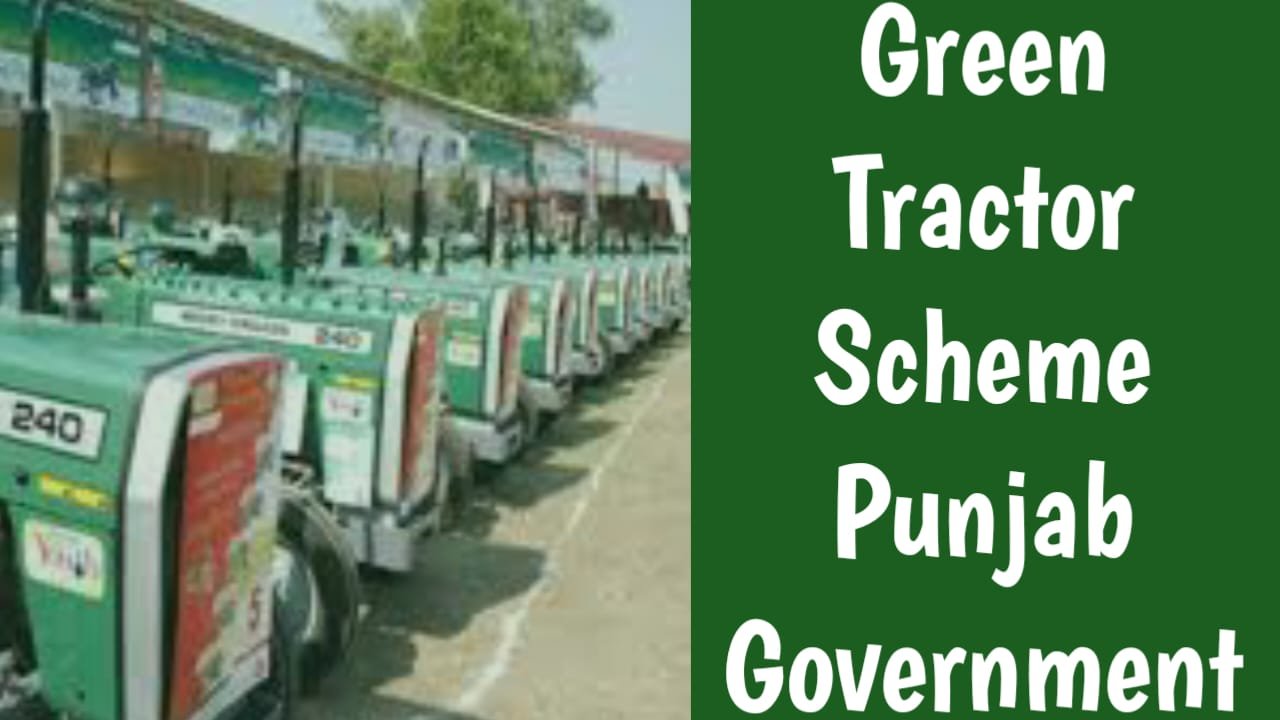Introduction
Agriculture is the backbone of Pakistan’s economy, with Punjab being the most significant contributor due to its fertile lands and favorable climate. Recognizing the importance of agriculture and the need for modernization, the Government of Punjab has introduced various initiatives to support farmers. One such initiative is the Green Tractor Scheme, aimed at improving agricultural productivity and providing financial relief to farmers. This scheme is a vital step towards sustainable agricultural practices and economic development in the region.
Objectives of the Green Tractor Scheme
The Green Tractor Scheme has several key objectives:
- Modernization of Agriculture: By providing tractors at subsidized rates, the scheme aims to modernize farming practices, enabling farmers to adopt mechanized farming methods.
- Increase in Productivity: Mechanization of farming is expected to lead to higher crop yields, thus increasing overall agricultural productivity.
- Financial Support to Farmers: The scheme offers financial relief to small and medium-sized farmers who may not have the means to invest in expensive agricultural machinery.
- Promotion of Sustainable Practices: By encouraging the use of modern equipment, the scheme promotes sustainable farming practices that can lead to long-term benefits for the environment and the economy.
Implementation and Eligibility Criteria
Implementation
The Green Tractor Scheme is implemented through a well-structured process to ensure transparency and efficiency. The Punjab Government collaborates with various financial institutions and agricultural departments to facilitate the scheme. Farmers interested in availing the benefits of the scheme must apply through designated channels, providing necessary documentation and meeting specific criteria.
Eligibility Criteria
To be eligible for the Green Tractor Scheme, farmers must meet the following criteria:
- Residency: The applicant must be a resident of Punjab.
- Land Ownership: The farmer should own a specific amount of agricultural land, typically between 5 to 12.5 acres.
- Income Level: The scheme primarily targets small and medium-sized farmers with limited financial resources.
- Previous Benefits: Farmers who have not previously availed similar government schemes are given priority to ensure fair distribution of resources.
Financial Assistance and Subsidies
The core component of the Green Tractor Scheme is the financial assistance provided to farmers. This assistance comes in the form of subsidies on the purchase of tractors. The government covers a significant portion of the tractor’s cost, making it affordable for farmers. Typically, the subsidy ranges from 25% to 50% of the total cost, depending on the farmer’s financial status and landholding size.
In addition to subsidies, the government also collaborates with financial institutions to offer low-interest loans to farmers. These loans are designed to cover the remaining cost of the tractor, making the overall financial burden manageable.

Impact on Agricultural Productivity
The introduction of the Green Tractor Scheme has had a profound impact on agricultural productivity in Punjab. Some of the notable impacts include:
- Increased Crop Yields: The use of tractors and modern machinery has led to more efficient farming practices, resulting in higher crop yields.
- Reduced Labor Costs: Mechanization reduces the need for manual labor, lowering the overall cost of farming and increasing profit margins for farmers.
- Timely Farming Operations: Tractors enable timely plowing, sowing, and harvesting, which are crucial for maximizing agricultural output.
- Enhanced Soil Management: Modern equipment allows for better soil management practices, such as precise plowing and tilling, leading to improved soil health.
Challenges and Future Prospects
Challenges
Despite its success, the Green Tractor Scheme faces several challenges:
- Awareness and Accessibility: Many farmers, particularly in remote areas, are unaware of the scheme or find it challenging to access the necessary information and resources.
- Financial Barriers: Although subsidies and loans are available, some farmers still struggle to afford the initial investment required to purchase a tractor.
- Maintenance and Training: Proper maintenance of tractors and training for farmers on their use are essential for sustained benefits, but these aspects are often neglected.
Future Prospects
To address these challenges and enhance the scheme’s effectiveness, the following measures can be considered:
- Increased Outreach: Expanding awareness campaigns and improving accessibility to information through digital platforms and local agricultural offices.
- Enhanced Financial Support: Introducing more flexible financial options, such as microloans and grants, to cater to the needs of small-scale farmers.
- Training and Maintenance Programs: Implementing training programs for farmers on the use and maintenance of tractors, ensuring long-term benefits and sustainability.
Conclusion
The Green Tractor Scheme in Punjab is a commendable initiative that has significantly contributed to the modernization of agriculture and the economic upliftment of farmers. By providing financial assistance and promoting mechanized farming practices, the scheme has the potential to transform the agricultural landscape of Punjab. However, to fully realize its benefits, continuous efforts are needed to overcome the existing challenges and ensure that the scheme reaches all deserving farmers. With sustained support and improvements, the Green Tractor Scheme can pave the way for a prosperous and sustainable agricultural future in Punjab.




